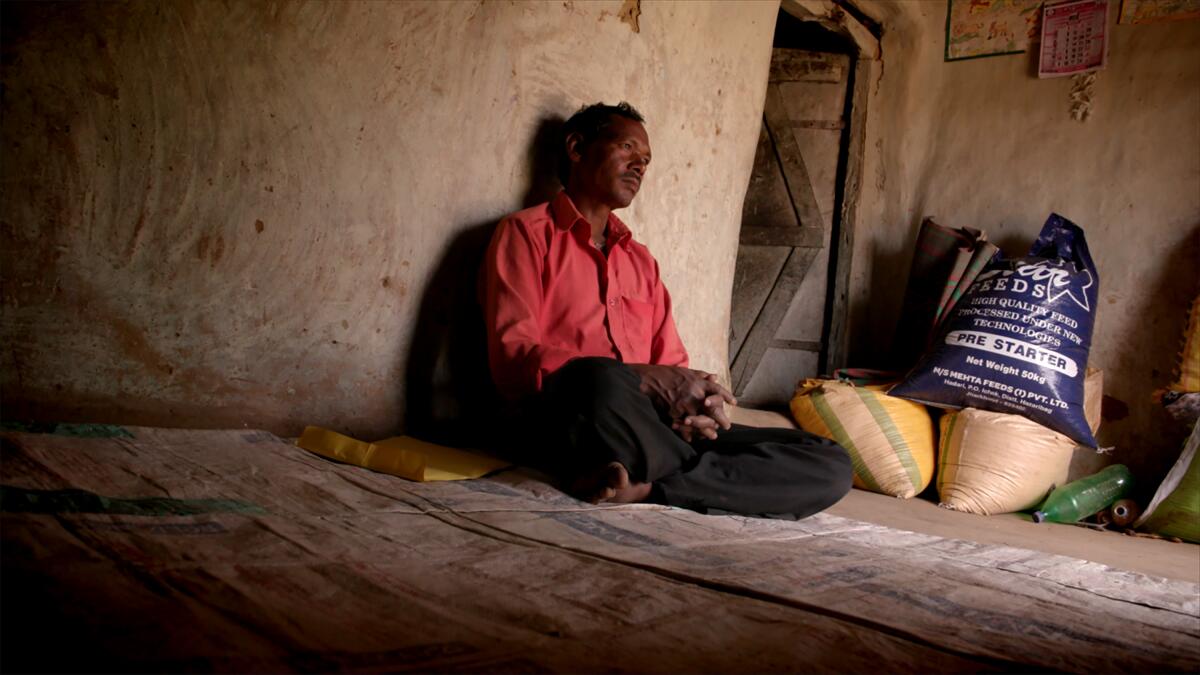‘To Kill a Tiger’ chronicles an Indian family’s battle for justice for their daughter

Nisha Pahuja’s powerful documentary “To Kill a Tiger” offers an unflinching look at a father’s search for justice after three men abducted his 13-year-old daughter and sexually assaulted her in a small village in India. Pahuja, who also directed the 2012 News & Documentary Emmy-nominated doc, “The World Before Her,” says making the movie was one of the most difficult things she has ever done.
“You realize that your camera is protecting the family in a way and that you’re bearing witness to something that is part of a necessary change,” she says. “But you also feel responsible for the dissolution of the bonds within that community as that culture is rooted so much in the collective. You know that you’re doing something for the greater good, but there’s also friction because of the dismantling of something profound.”
The negative spotlight on the village upset many in the community, some of whom thought the best thing to do would be for the girl to marry one of her assailants, a frequent cultural solution to restore a victim’s honor, and for her father to drop the claims.
The Indian-born Canadian filmmaker spoke with The Envelope via Zoom about her film, which is nominated for a documentary feature Oscar.
Your film has received more than 20 awards so far. How did you discover its subjects?
About eight years ago, I was actually making a different film following the work of the Center for Health and Social Justice, an organization that works on gender sensitization programs for men and boys. One of the men enrolled in this program was Ranjit, and when I learned about the horrific thing that happened to his daughter and the aftermath of the assaults, I began to follow his story.

Among the many things that stand out in your film is the level of trust Ranjit and his daughter, Kiran (not her real name), have in you. How were you able to establish that bond with the family?
Normally, when you make a documentary, you meet the participants beforehand. However, in this instance, I met Ranjit and his family for the first time with camera in hand. They graciously and generously allowed us to film, but it took several months before they became really comfortable with us. One of the big challenges was navigating the complexity of what we were filming and issues of consent and informed consent and the best way to film the survivor: It was a very delicate dance, but we were always making sure that we included the family in all our decisions.
How many people worked with you during the filming?
It was mostly me, the director of the photography, who was often my husband, Mrinal Desai, our sound recordist and our driver. Occasionally, when it was a complicated shoot like the days we filmed people in the community, we also had an assistant, but mainly it was the core team of three people.
At one point, you were thinking about using animation or facial replacement technology to protect the identity of Ranjit’s daughter, who we’re calling Kiran. Why did you end up abandoning those ideas?
Initially, we were thinking about filming her in a more abstract way. But it felt kind of unethical if we filmed her in a way that was different from the others, as if we were inadvertently emphasizing to her that she had done something wrong. So we made a conscious decision that we’d find a way to mask her identity in postproduction. During the editing process, which took three years, we tried a number of different techniques, but I couldn’t shake the fact that it all felt strange. I felt that by hiding her identity, I was feeding into this idea [of blame]. Because the film took so long to make, Kiran became an adult during the course of the film, and she made the decision that she wanted to be seen in it. When we showed the final cut of the film to her and her parents, they all decided to include her.
She was really proud of herself and what she achieved, and that’s why she chose to come forward. Kiran is really an extraordinary young woman: To have that courage and self-esteem at age 13 is very special. It’s really about understanding the value of who you are as a human being and that you deserve justice. Kiran has now left the village and plans to be a police officer.
“To Kill a Tiger” has a long list of well-known executive producers, including actors Dev Patel and Mindy Kaling, poet Rupi Kaur and surgeon and bestselling author Atul Gawande. How did you recruit such an impressive group?
One of the first people who came aboard was Atul Gawande, who also showed it to Mindy Kaling. They all wanted to get involved after they were shown cuts of the film because they believed in it. However, when I showed the early versions to people in India, everyone said they thought it was a beautiful film but that no one was going to watch it. I thought I could not have worked eight years to tell this story and have no one see it. I knew that in order for me to get this film out into the world, I needed to involve people who had the spotlight and could raise awareness of it everywhere.
Can you talk about the impact of the documentary?
It’s a case that is much talked about, and it has encouraged other survivors to come forward, but, you know, it’s not like the problem is solved. We have a broken system and a culture in which misogyny and patriarchy are deeply embedded in every single system. There is still so much work to do, and we’re hoping that the film can galvanize more substantial change. The film hasn’t actually been shown in India, but the intention is without a doubt to release the film there. I also think there is this kind of fatigue with the idea of sexual violence in India, because it is so common. For a long time after the 2012 Delhi gang rape, there was a lot of attention paid to the issue, rightfully, but I think there’s a fatigue that has set in. I think what’s kind of unique about our film is it highlights the importance of men standing up for their daughters and the women in their lives, which is so unusual and rare.
More to Read
From the Oscars to the Emmys.
Get the Envelope newsletter for exclusive awards season coverage, behind-the-scenes stories from the Envelope podcast and columnist Glenn Whipp’s must-read analysis.
You may occasionally receive promotional content from the Los Angeles Times.







